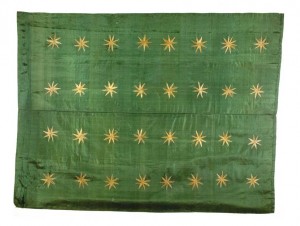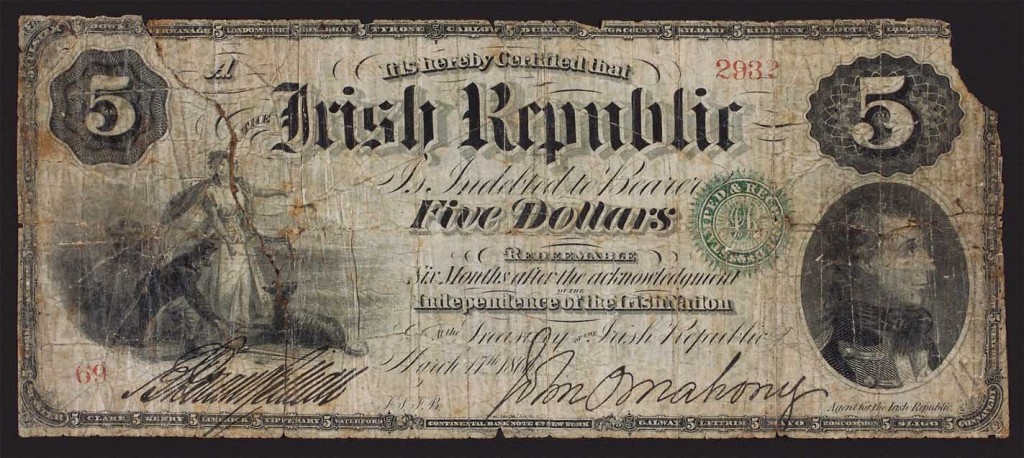Flags of the Fenians
Published in Artefacts, Issue 1 (January/February 2016), Volume 24By Lar Joye

The Fenian flag captured at Tallaght on 5 March 1867.
The Irish Republican Brotherhood, more commonly known as the Fenians, was founded simultaneously in Ireland and the United States in March 1858. By 1861, at the start of the American Civil War, it had become a formidable secret organisation in Ireland, and also among Irish emigrants in Britain and the United States. America was very much the inspiration for the Fenian movement, as France had been for the United Irishmen in 1798 and the Young Irelanders in 1848.
For the remainder of the decade there was a difference of opinion over whether to have revolution in Ireland or to invade Canada. Canada was invaded in 1866 (see HI 16.6, Nov./Dec. 2008, ‘Artefacts’, p. 51) and a rebellion eventually broke out in Ireland in March 1867. Focused outside Dublin, it failed to attack the centre of the British government’s military and civilian power. Some have argued that if the rebellion had occurred in 1866 it would have been more successful, as the Fenians had successfully infiltrated many British Army regiments; in response, the authorities arrested 1,600 soldiers in 1866 and sentenced many to death, but these sentences were quickly commuted to life imprisonment, unlike in 1916. During the 1867 rising, local police barracks were attacked in appalling weather but the rebellion was quickly dispersed by the Irish Constabulary. In honour of their success Queen Victoria rewarded them with the prefix ‘Royal’.
During the rising there were three types of Fenian flags: the standard nationalist green flag with harp; flags with a sunburst; and flags inspired by the stars and stripes of the United States. Most of the fighting took place in Stepaside and Tallaght, and one of the few remaining flags to survive is this one captured at Tallaght by Sub-Inspector Burke from Rathfarnham barracks. The flag was later given by his family to the National Museum; it is made of green silk and bears 32 stars. After the 1867 rising the Fenian movement was split between those who believed in a constitutional approach and those who favoured armed revolution. This legacy, of course, was to influence the events of 1916.

A Fenian bond for $5 — ‘redeemable six months after the acknowledgement of the independence of the Irish nation’ — signed by John O’Mahony and dated 17 March 1866.
Lar Joye is curator of military history at the National Museum of Ireland (Decorative Arts).
















